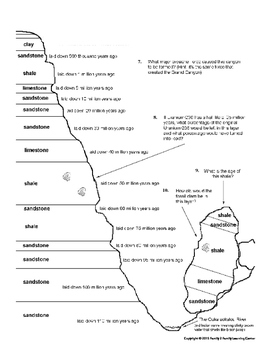Methods of Geological Dating
William Smith collected the fossils of his building sites, and over time he has learned to recognize what fossils tend to be up in the layers of rock. So, both in Geology and paleontology, we want to be able to point to an object and say exactly how old it is. Perhaps Paul's dinosaur was 176, or 174 million years old, but either way, Paul has age is a better approximation to the dinosaur fossil when he was only relative Dating. Index-fossils are used to correlate the relative age of rocks that are separated by large distances. We have fossils of plants and animals that lived there want to, for a relatively short period of time, like a few hundred thousand years or so. However, another form of relative Dating is the use of fossil succession: the principle that certain sets of fossils, followed, in a step fashion way, through geological time. Relative Dating of The first method, which scientists use to determine the age of rocks is relative dating. For example, humans and modern elephants are part of the same Assembly, because we live in the same time. Summary of the lesson, When the rocks are made of different layers, which we use to determine the stratigraphic sequence, the relative age of each of the layers in the rocks. He saw that to create it underwent radioactive decay or emission of energetic particles new elements. Numerical Dating in stratigraphy and fossil succession are good tools for the investigation of the relative dates of events in the history of the earth, but they do not help with numerical dating. We would not want to use, a horseshoe crab fossil since horseshoe crabs have been around for over 400 million years and are still alive today. Fossil succession is based on the observation that certain sub-assemblies or groups of animals and plants have lived during a certain time in the course of earth's history. We also want to be our index fossils to identify common, widespread species that are easy for the scientists. When digestion is complete, two index contains spaces-fossils from two different time periods, it acts as a 'missing link' between the other rocks, the only one of the two fossils.
Stegosaurus and Triceratops were not part of the same structure, because they lived at different times. Along the way we learn how the stratigraphic sequence and radioactive decay contribute to the work of paleontologists. He worked in the South of England, and he got to see all kinds of different rocks have been exposed to layers of rocks and channels. Again, this does not say exactly how old the layers are, but it does not give you an idea of the orderly sequence of events that occurred over the history of the geological formation. Summary of the lesson In the reality, use the scientists to establish a combination of relative and numerical dating, the age of rocks and fossils. And, although the rock-types were different scientists relative age of the other rocks could assign, based on their fossils. The Barosaurus was in the upper Morrison Formation, while the Hypsilophodon was in the lower Lakota Sandstone. Let's find out more about these geological Dating methods in order to understand how Paul of paleontologists about the age of its dinosaur fossils.
Relative Dating with Fossils: Index
Could vs Should Grammar Quizzes

We use the index to identify fossils, the periods of geological history, and to compare pieces of the rock layers, which were separated by great distances. We don't want to use, fossils of species that lived too long; these fossils show up in more than one layer of rock. An index fossil a fossil represents a plant or animal that exists for a relatively short period of time. Scientists do not know how old the was either from the rocks or even the dinosaur, older than the other. In contrast to relative Dating, which only tells us the age of rock compared to rock B, numerical dating tells us the age of rock A in x number of years. It is a complicated science that requires a lot of knowledge about chemistry and physics, but it is the only way to determine the actual, absolute number for the age of rocks and fossils. Paul says he can tell from the fossils, the superus awesomus lived on the earth some 175 million years ago. You could assume that the Tendaguru rocks in East Africa were older than the Wealden rocks in Europe. By studying how the mass of the uranium active decay changes with the radio, Rutherford was able to determine the age of the rock, with a uranium mineral. If you find a section of rock that has a lot of different layers, you can assume that the lowest layer is the oldest and the top layer is the youngest.
No comments:
Post a Comment